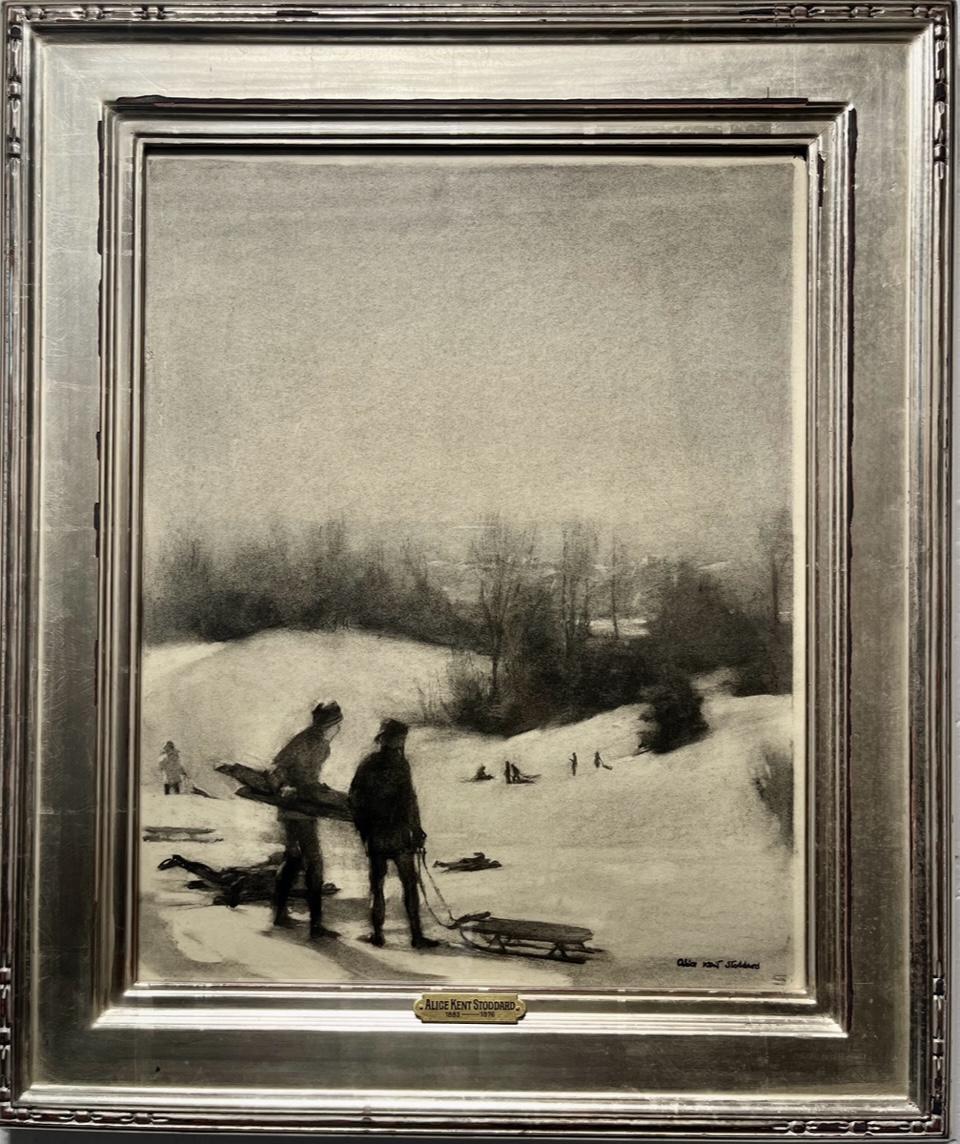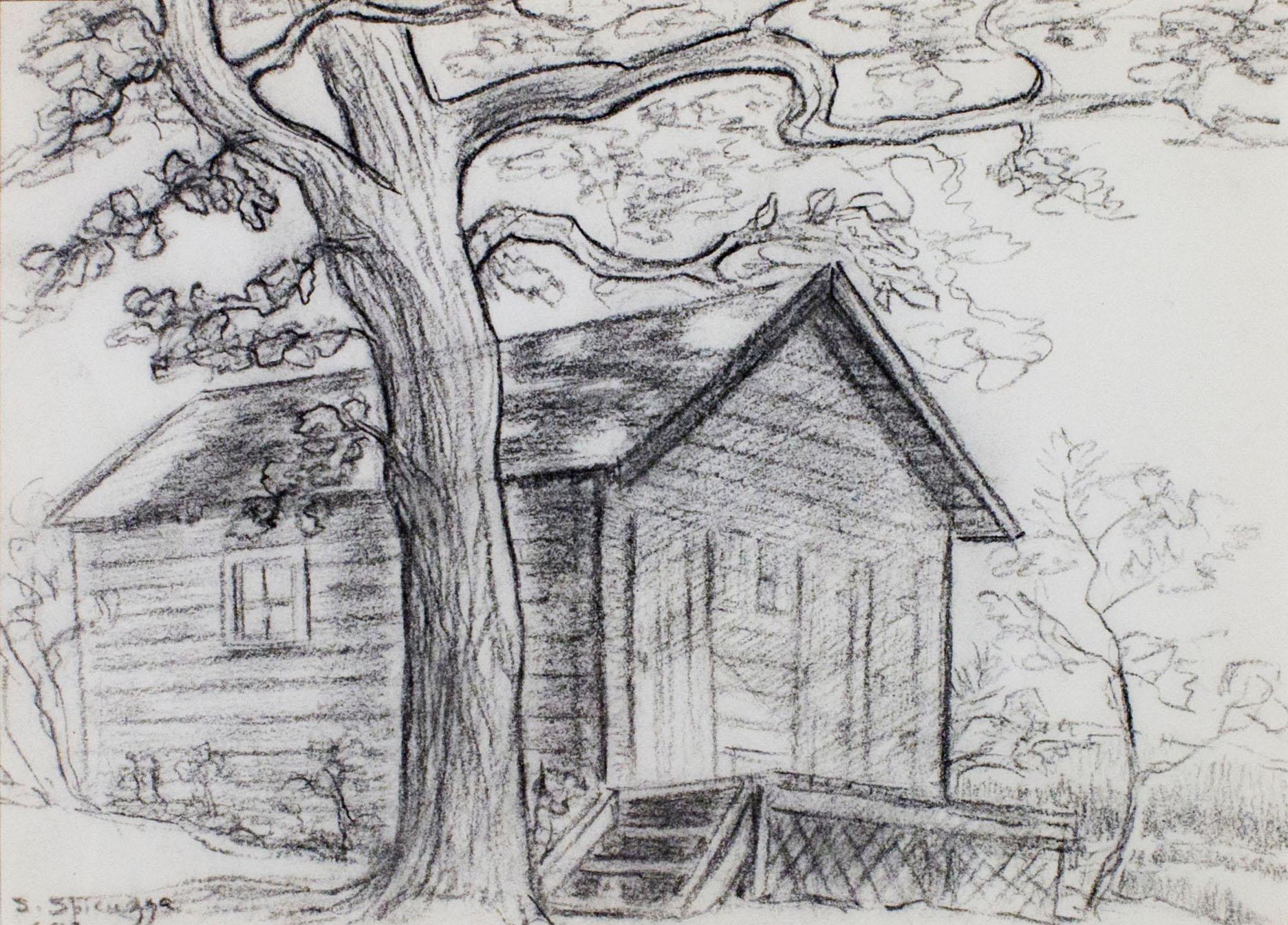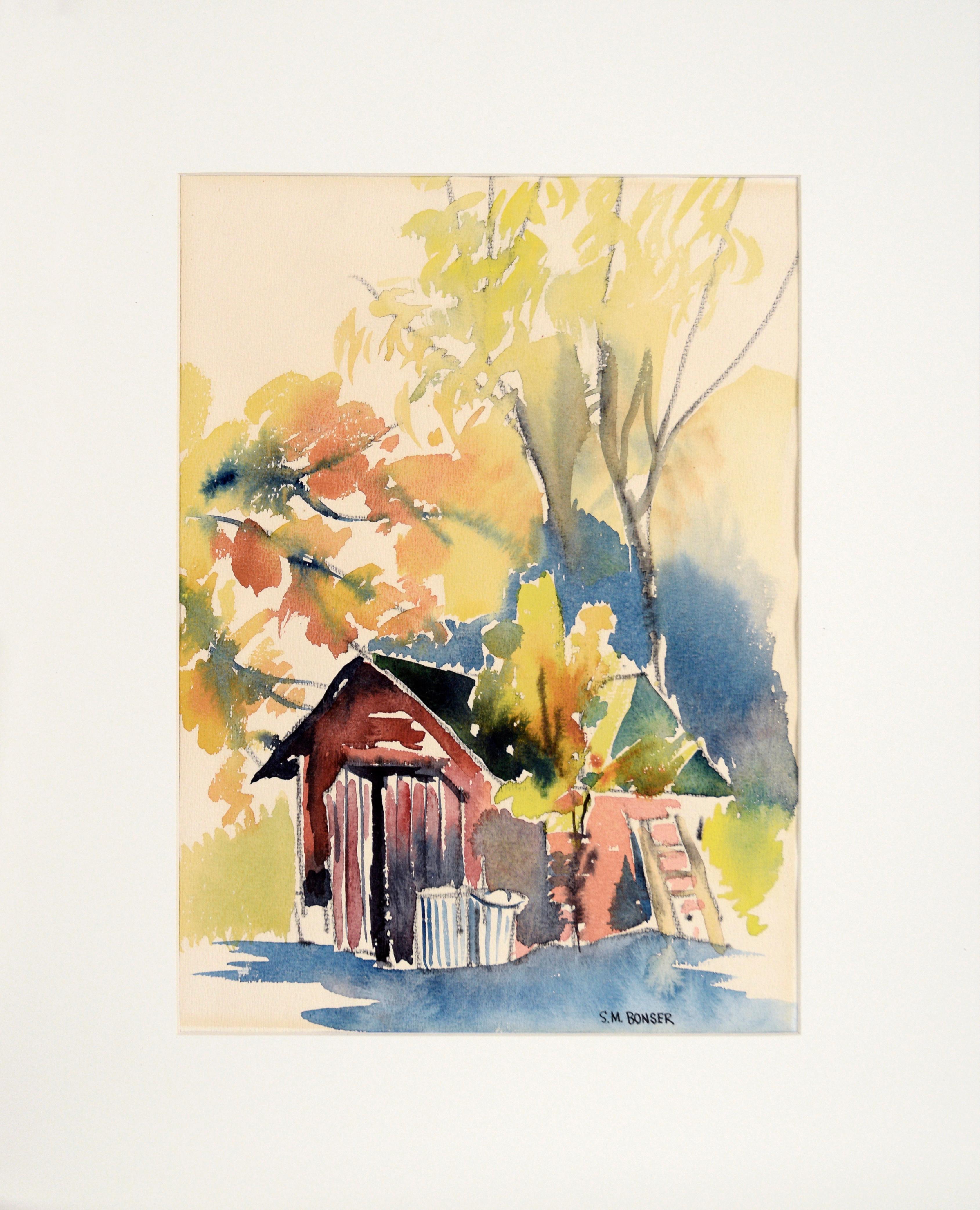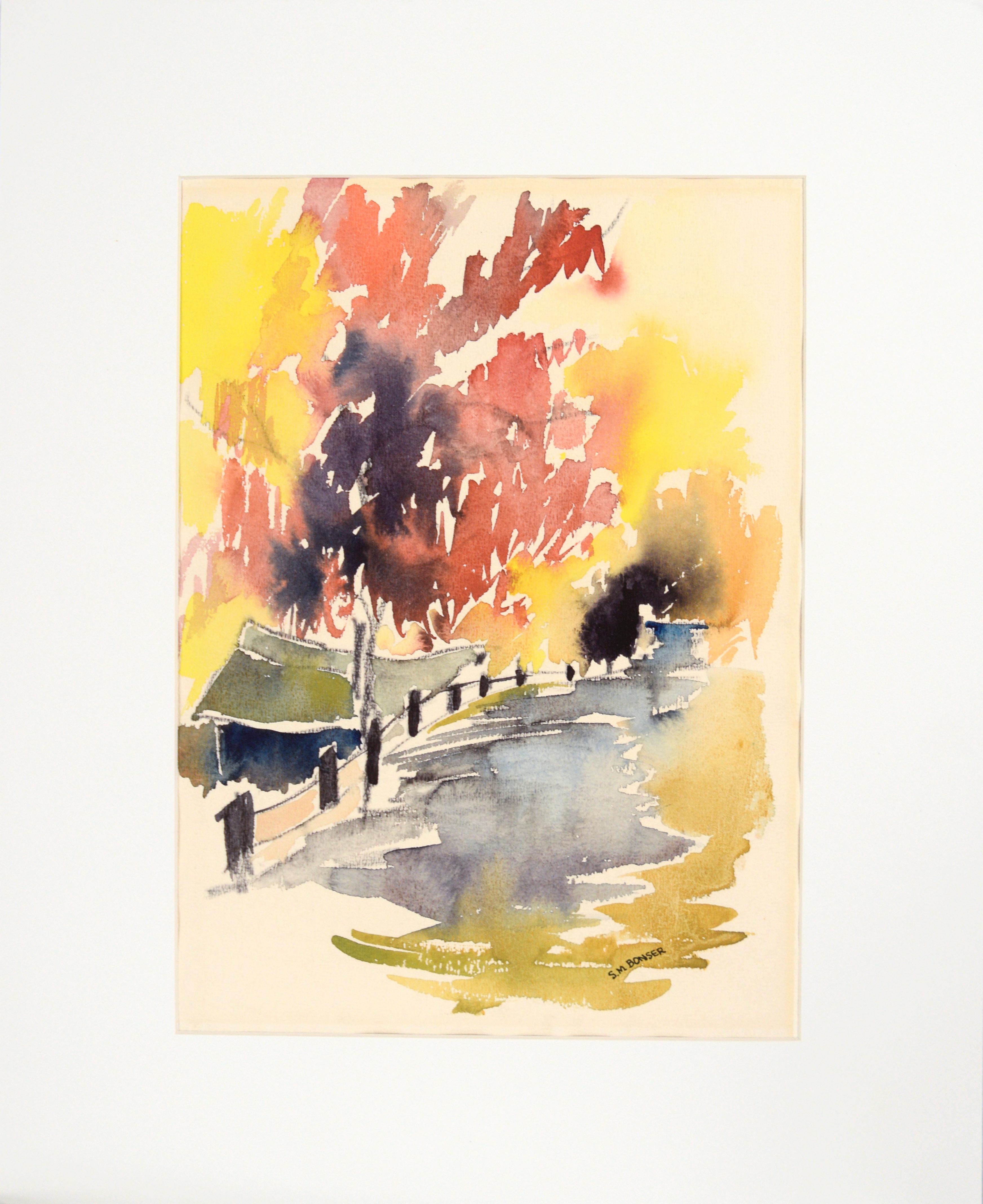Items Similar to Charcoal Drawing by Albert Lorey Groll, American
Want more images or videos?
Request additional images or videos from the seller
1 of 6
Albert GrollCharcoal Drawing by Albert Lorey Groll, American
About the Item
17" x 23.5" in the frame and mat. Provenance: Kennedy Galleries, NYC Signed lower left.Bio : Born in New York City, Albert Lorey Groll became a much admired, successful western desert landscape and skyscape painter, although he remained a resident of New York City where he associated with the cultural elite. In 1910, he was elected to the National Academy of Design. Many of his paintings have rich colors and are landscapes with elements of realism but also have a focus on abstract shapes.
Groll spent most of his student years in Munich, Germany at the Royal Academy studying with Ludwig Loefftz, and London, England; and he also studied at the Royal Academy in Antwerp, something few Americans were doing in the late 19th century.
Although he preferred figure painting, he returned to New York City in 1895 and became exclusively a landscape painter because he could not afford to pay models for figure painting.
He painted along the Atlantic Coast and then went West with Brooklyn Indian ethnologist, Professor Stuart Culin, who was writing a treatise on Indian games. Groll painted landscapes in Arizona and New Mexico, especially skyscapes with towering cloud formations. The Laguna Pueblo Indians of New Mexico were so admiring of his landscapes they named him Chief Bald-Head-Eagle Eye.
In 1904, he first went to Arizona, where he accompanied Culin, and became a friend and guest of Indian dealer Lorenzo Hubbell at his well-known Ganado trading post. One of Groll's desert scenes, Arizona, won a gold medal at the Pennsylvania Academy of Fine Arts in 1906, and after this recognition, Groll wrote to Hubbell that this western paintings "have made a decided hit, both artistically and financially; inf fact, my visit to the Southwest has been my lucky stars." (Blue, 215) In 1908, Groll spent the summer in Arizona and at Yellowstone National Park.
Although he was much recognized in the East, he continued to return to the West, especially the desert, and it was he who alerted the general public to the varying conditions of Arizona that made the desert so appealing. Of this ability, Dorothy Harmsen wrote in her book, American Western Art that he caused Americans to "recognize the artistic possibilities that existed in the desert land of that area. This sagebrush and cactus country, laying broad and low with arid yellow soil, stretching away to a sky full of clouds, makes an unforgettable picture" (84).
He also did a lot of painting in New Mexico at Laguna and Santa Fe, and is credited with introducing William Robinson Leigh to the Southwest. Subsequently Leigh became more famous for his paintings of the region than Groll. The two of them had studied together in Munich, and at Groll's suggestion, first went to New Mexico in 1906.
In addition to the method of pure oil painting, Groll mixed crayon with oil and sometimes scuffed the surface to get a textural effect.
- Creator:Albert Groll (1866 - 1952, American)
- Dimensions:Height: 17 in (43.18 cm)Width: 24 in (60.96 cm)Depth: 1 in (2.54 cm)
- Medium:
- Movement & Style:
- Period:
- Framing:Frame IncludedFraming Options Available
- Condition:No condition issues that can be seen.
- Gallery Location:Hallowell, ME
- Reference Number:1stDibs: LU128926608192
Albert Groll
1866-1952 Born in New York City in 1866, Albert Groll became a much-admired, successful western desert landscape and skyscape painter. In 1910, he was elected to the National Academy of Design. Many of his paintings had rich colors and were landscapes with elements of realism, but they also had a focus on abstract shapes. He spent most of his student years in Munich, Germany, at the Royal Academy studying with Ludwig Loefftz; he also studied at the Royal Academy in Antwerp, something few Americans were doing in the late 19th century. In 1905, Groll first came to Arizona, where he became a friend and guest of Indian dealer Lorenzo Hubbell at his well-known Ganado Trading Post. One of Groll's desert scenes, Arizona, won a gold medal at the Pennsylvania Academy of the Fine Arts in 1906. In 1908, Groll spent the summer in Arizona and at Yellowstone National Park. It was Groll who introduced the general public to the varying landscapes of Arizona that made the desert so appealing. *https://www.matteucci.com/albert-groll
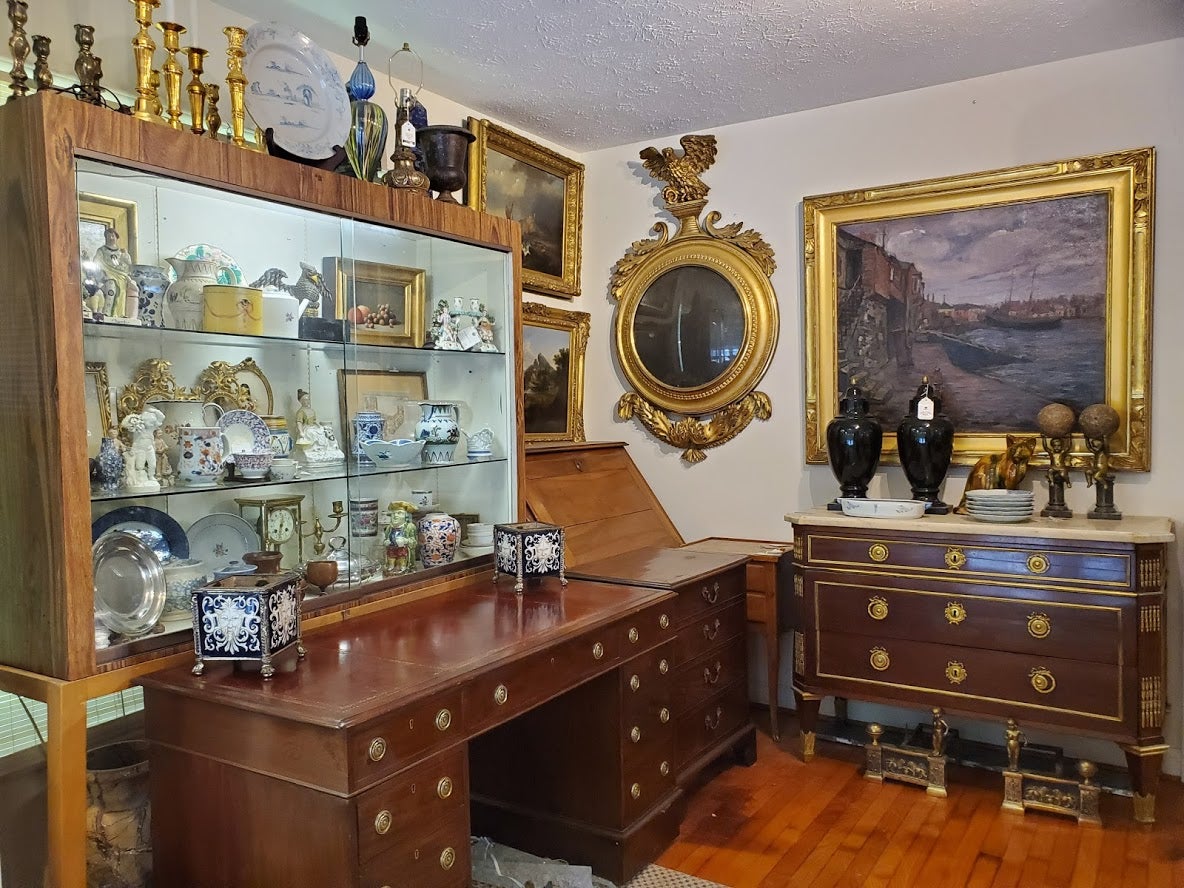
About the Seller
4.7
Vetted Seller
These experienced sellers undergo a comprehensive evaluation by our team of in-house experts.
Established in 1913
1stDibs seller since 2019
157 sales on 1stDibs
- ShippingRetrieving quote...Ships From: Hallowell, ME
- Return PolicyA return for this item may be initiated within 14 days of delivery.
More From This SellerView All
- Albert Lorey Groll, American 1866-1952 Pencil sketch.By Albert GrollLocated in Hallowell, ME6.5" x 8" pencil on paper. Crows in a landscape. In custom mat from Kennedy Galleries, approx 14" x 20"Born in New York City, Albert Lorey Groll became a much admired, successful western desert...Category
Early 20th Century American Impressionist Landscape Drawings and Waterco...
MaterialsPencil
- American School Table Top Still Life, signed Lerner, dated 1951Located in Hallowell, MEOil on canvas, 14" x 16"--signed Lerner and I have not cleaned this painting. Right out of the house sold as is for this price. Three possibilities of identity of the artist yet to...Category
1950s American Impressionist Still-life Paintings
MaterialsOil
- C. Griffin, American 20th C Floral Bouquet Still Life in a Vase, 20th C.Located in Hallowell, MESigned lower left and verso--C Griffin. American there are a couple of possibilities. A very finished still life.Category
1940s American Impressionist Still-life Paintings
MaterialsOil
- Ink Drawing of a Peasant Holding a Cane, dated '62Located in Hallowell, MEFine quality ink drawing fully signed and dated although I cannot break the signature. I put it in a custom frame. Ink on toned paper.Category
1960s Impressionist Portrait Drawings and Watercolors
MaterialsInk
- A Market in Tzfat, Impressionist view in Israel 1960's Tzvi RaphaeliLocated in Hallowell, MEApprox 8 3/4" x 12 3/4" oil on canvas board, fully signed lower right in Hebrew and bearing exhibition label verso offered by the Safrai Gallery. Board has slight deformation that ...Category
1950s Impressionist Landscape Paintings
MaterialsOil
- Belgian School Marine Landscape, signed , circa 1875Located in Hallowell, MEOil on mahogany panel with perfectly good signature that I cannot quite decipher. It is Belgian and has a flag that references the country of origin. I just bought this work and ...Category
1880s Impressionist Landscape Paintings
MaterialsOil
You May Also Like
- Sledders - Winter Snow Scene - Kids playing on Sleds, Charcoal drawing c 1950-60By Alice Kent StoddardLocated in Rancho Santa Fe, CAAlice Kent Stoddard 1885-1976 Sledders (circa 1950-1960) Black chalk on card Image Dimensions: 19.75 x 16 inches (50.2 x 40.6 cm) Framed Dimensions: 26.5 x 22.3 inches Signed lower...Category
Mid-20th Century American Impressionist Figurative Drawings and Watercolors
MaterialsCharcoal, Cardboard
- "Bare Tree"By Daniel GarberLocated in Lambertville, NJJim’s of Lambertville Fine Art Gallery is proud to present this piece by Daniel Garber (1880 - 1958). One of the two most important and, so far, the most valuable of the New Hope School Painters, Daniel Garber was born on April 11, 1880, in North Manchester, Indiana. At the age of seventeen, he studied at the Art Academy of Cincinnati with Vincent Nowottny. Moving to Philadelphia in 1899, he first attended classes at the "Darby School," near Fort Washington; a summer school run by Academy instructors Anshutz and Breckenridge. Later that year, he enrolled at the Pennsylvania Academy of the Fine Arts. His instructors at the Academy included Thomas Anshutz, William Merritt Chase and Cecilia Beaux. There Garber met fellow artist Mary Franklin while she was posing as a model for the portrait class of Hugh Breckenridge. After a two year courtship, Garber married Mary Franklin on June 21, 1901. In May 1905, Garber was awarded the William Emlen Cresson Scholarship from the Pennsylvania Academy, which enabled him to spend two years for independent studies in England, Italy and France. He painted frequently while in Europe, creating a powerful body of colorful impressionist landscapes depicting various rural villages and farms scenes; exhibiting several of these works in the Paris Salon. Upon his return, Garber began to teach Life and Antique Drawing classes at the Philadelphia School of Design for Women in 1907. In the summer of that same year, Garber and family settled in Lumbertville, Pennsylvania, a small town just north of New Hope. Their new home would come to be known as the "Cuttalossa," named after the creek which occupied part of the land. The family would divide the year, living six months in Philadelphia at the Green Street townhouse while he taught, and the rest of the time in Lambertville. Soon Garber’s career would take off as he began to receive a multitude of prestigious awards for his masterful Pennsylvania landscapes. During the fall of 1909, he was offered a position to teach at the Pennsylvania Academy as an assistant to Thomas Anshutz. Garber became an important instructor at the Academy, where he taught for forty-one years. Daniel Garber painted masterful landscapes depicting the Pennsylvania and New Jersey countryside surrounding New Hope. Unlike his contemporary, Edward Redfield, Garber painted with a delicate technique using a thin application of paint. His paintings are filled with color and light projecting a feeling of endless depth. Although Like Redfield, Garber painted large exhibition size canvases with the intent of winning medals, and was extremely successful doing so, he was also very adept at painting small gem like paintings. He was also a fine draftsman creating a relatively large body of works on paper, mostly in charcoal, and a rare few works in pastel. Another of Garber’s many talents was etching. He created a series of approximately fifty different scenes, most of which are run in editions of fifty or less etchings per plate. Throughout his distinguished career, Daniel Garber was awarded some of the highest honors bestowed upon an American artist. Some of his accolades include the First Hallgarten Prize from the National Academy in 1909, the Bronze Medal at the International Exposition in Buenos Aires in 1910, the Walter Lippincott Prize from the Pennsylvania Academy and the Potter Gold Medal at the Art Institute of Chicago in 1911, the Second Clark Prize and the Silver Medal from the Corcoran Gallery of Art for “Wilderness” in 1912, the Gold Medal from the Panama-Pacific Exposition in San Francisco of 1915, the Second Altman Prize in1915, the Shaw prize in 1916, the First Altman Prize in 1917, the Edward Stotesbury Prize in1918, the Temple Gold Medal, in 1919, the First William A...Category
Early 20th Century American Impressionist Landscape Drawings and Waterco...
MaterialsCharcoal, Paper
- "Old Cabin Near Big Cedar Lake" original charcoal drawing by Sylvia SpicuzzaBy Sylvia SpicuzzaLocated in Milwaukee, WIIn this drawing, Sylvia Spicuzza presents the viewer with a lakeside cabin under the shade of a massive tree. This drawing is reminiscent of the work done by her father Francesco, wh...Category
1950s American Impressionist Landscape Drawings and Watercolors
MaterialsCharcoal
- "Still Life with Fruit" original charcoal drawing by Sylvia SpicuzzaBy Sylvia SpicuzzaLocated in Milwaukee, WIIn this drawing, Sylvia Spicuzza presents the viewer with a dark, subtle view of two apples, still clinging to their leaves. Examples like this show the ability of Spicuzza to draw i...Category
1920s American Impressionist Figurative Drawings and Watercolors
MaterialsCharcoal, Paper
- "Our Model T Garage" - Watercolor Landscape on PaperLocated in Soquel, CA"Our Model T Garage" - Watercolor Landscape on Paper A rust-red barn sits below an autumn canopy of trees with contrasting blue background. Cool hues cast deep, brooding shadows opp...Category
21st Century and Contemporary American Impressionist Landscape Drawings ...
MaterialsPaper, Watercolor, Charcoal
- An Enlightening Afternoon Near Oregonia - Watercolor Landscape on PaperLocated in Soquel, CAAn Enlightening Afternoon Near Oregonia - Watercolor Landscape on Paper A cool pond and walking trail sprawl below an autumn canopy of trees in complementary reds and purples accent...Category
21st Century and Contemporary American Impressionist Landscape Drawings ...
MaterialsPaper, Watercolor, Charcoal
